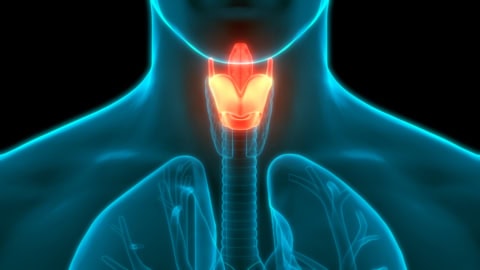What is singing breathing and why is it best suited for singing?
You have probably heard of the distinction between the flat Chest breathing and deep abdominal or diaphragmatic breathing. Which of the two ways of breathing is best suited for singing? The answer is: neither of them! So-called speech or singing breathing is rather a combination of both types of breathing. That is why it is also called "combined" or "phonation" breathing.
With vocal breathing, we breathe in for a short time and out for a long time. With this type of breathing we get air just as quickly as with shallow chest breathing, which we need for strenuous physical activity. Nevertheless, the breath goes deep when we sing, just as it does with the slow abdominal breathing that occurs when we relax or sleep. Breathing into the belly allows us to take in more air than when we breathe shallowly into the chest.
To get air quickly, we have to learn to relax our belly in a flash. This way we have enough air when singing long notes and ballads. Even when singing fast songs, you will always take in enough air in short inhalation pauses. At the same time, you strengthen your breathing muscles and get used to using "fast" abdominal breathing.
The breath support
In order to have enough air, stabilise long notes and take pressure off the vocal cords, singers and speakers also train in what is called supported exhalation. What we call "breath support" is a complex process that doses the air we exhale and thereby reduces the pressure that acts on the vocal cords during exhalation. The trained singer and speaker is able to maintain the stretching tension of the inhalation when exhaling and thus keep the air pressure constant for a long time - hence the term "singing on the breath".
Why is supporting important?
The breath flow is dosed through the support. This means that you don't run out of breath so quickly during long sentences or vocal parts. Through a regular exhalation flow, the sounds are stabilised and no longer wobble. It's like a jet of water on which a ball dances: When the water pressure fluctuates, the ball falls down. If our exhalation is irregular, our sound also wobbles.
In addition, the pressure on the vocal cords is relieved by supporting them. Many people tend to press, especially with high notes. This presses the vocal cords against the overlying pouch ligament. This can lead to friction, inflammation and Nodule formation on the vocal cords come.
Our throat muscles should always feel soft and supple. The prerequisite for this is the body connection through supporting. It is also so important so that singing is not impaired by pressure and tension in moments of vocal high performance. The basis of healthy singing is therefore a relaxed tone achieved through supple and flexible support.
Stretching our lower abdomen and lower back helps to ensure that the breath flows deep enough into the body to reach a deeper position of the diaphragm. It is almost impossible to produce a balanced sound if the breath is not deep enough. The stretching of the lower back secondarily enables the stretching of the lower abdominal muscles. In any case, the stretching of the lower back and that of the abdominal muscles must work together to achieve a sufficiently deep breath.
Deep abdominal breathing: a benefit for all people
Singing or speaking breathing is recommended for singers from beginners to advanced singers, because correct breathing is the basis for a healthy and sustainable voice. But also people who have to speak a lot for professional reasons benefit from this way of breathing.
As I mentioned at the beginning, deep abdominal breathing is also recommended in everyday life and for all people. In this way, our breath not only becomes a clock, but also a life-giver. We can sleep better, feel fitter and more alert, and blockages are also released.
Would you like to train your breathing and always have access to helpful breathing exercises? Then I recommend my online course Breathing Exercises.






